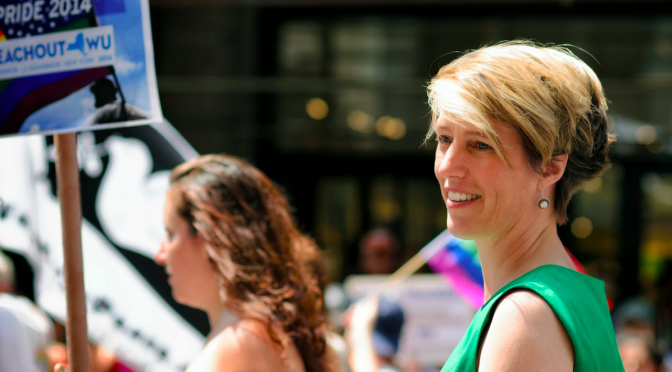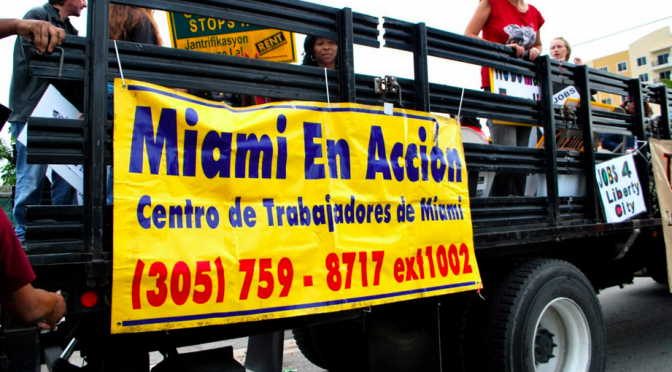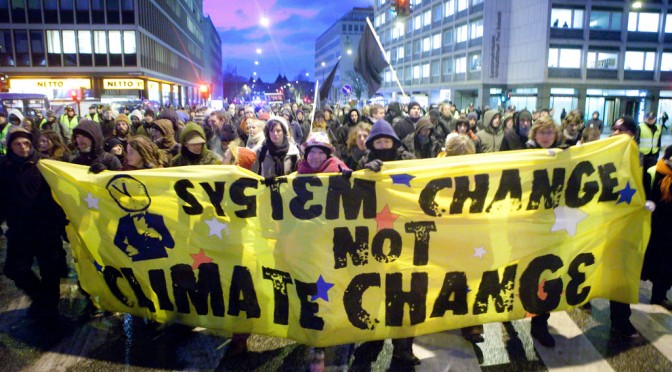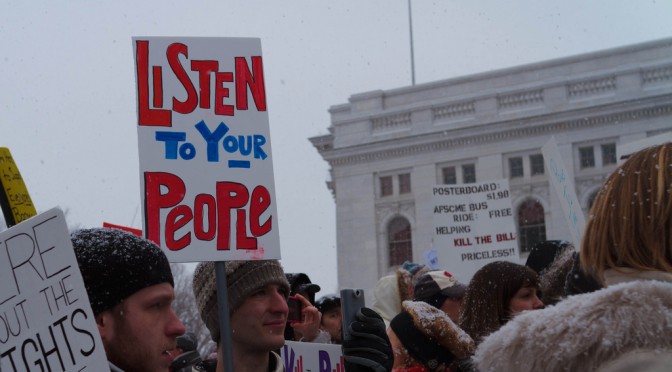By Jeremy Brecher
Delegates to Connecticut State Council of Machinists (CSCM) conference at the end of June voted unanimously to endorse and participate in the historic People’s Climate March set for Sunday, September 21, 2014 in Manhattan. This was just the most recent of a growing number of union endorsements for the March. New York area locals endorsing the March by June 20 included:
CWA District 1
CWA 1180
Teamsters Joint Council 16
Local 3 IBEW
DC37
SEIU 32BJ
TWU 100
Heat and Frost Insulators
UAW Region 9
NYSNA
Brotherhood of Maintenance and Way, Teamsters
SEIU 1199
These are just the pioneers: Many more endorsements, local and national, are expected.
The Peoples Climate March
On September 21, union members will march side-by-side with tens of thousands of their neighbors, friends and family members for a future with good jobs, clean air, and healthy communities for all.
The March coincides with a September 23 global summit on climate change called by United Nations Secretary-General Ban Ki-moon, frustrated at the slow pace of progress on this crucial issue. Ban Ki-moon will propose an aggressive global pact to dramatically reduce greenhouse gas emissions by the end of 2015.
The invitation to the March says:
“With our future on the line and the whole world watching, we’ll take a stand to bend the course of history. We’ll take to the streets to demand the world we know is within our reach: a world with an economy that works for people and the planet; a world safe from the ravages of climate change; a world with good jobs, clean air and water, and healthy communities. To change everything, we need everyone on board.”
Labor on the March
Labor supporters of the march are encouraging union members, their families and their friends to participate in the September 21 March as proud union members and labor allies who are both concerned for our communities and determined to make a difference. An unprecedented array of forces for climate, economic justice and environmental justice including labor, community, environmental, human rights, faith, and arts organizations are coming together for this march.
Labor participants explain that climate change must be considered a labor issue – and an issue of social justice. When Super Storm Sandy hit the northeast in October 2012, we experienced firsthand the devastating impacts of a rapidly changing global climate. It destroyed communities and also revealed the vulnerabilities and inequities that existed before the storm for working New Yorkers. Sandy showed us that climate change is here and that if we do nothing the most vulnerable will be the hardest hit. Working people, the poor, the young, the old, women, immigrants, and people of color are all suffering disproportionately, yet together gain the least from the current patterns of investment and neglect.
Like the 1963 March on Washington for Jobs and Freedom identified with Dr. Martin Luther King, Jr. this march will emphasize the centrality of jobs to other forms of progress – in this case climate progress. It will send the message that the two crises of the climate and the economy have one solution – put people to work making our economy climate-safe.
Labor supporters of the March maintain that we can create good paying union jobs that address the climate crisis by reducing our emissions and transition us to a sustainable, equitable economy with energy efficient buildings, improved and expanded public transit systems, renewables-based power, sustainable waste systems, and much more. Addressing the climate crisis is an opportunity to reduce unemployment, grow our unions, improve our community’s health and restore balance to our environment. It’s also an opportunity to challenge the 1% and corporate CEO’s who are responsible for both attacking our unions and polluting our environment and causing climate change. They are the main reason why the United Nations has failed to reach a binding global agreement on the reduction of greenhouse gas emissions.
Connecticut Machinists
The Connecticut State Council of Machinists delegates who voted to support the March represent more than 10,000 active and retired Machinists Union members in Connecticut from industrial sites including Pratt & Whitney, Hamilton Sundstrand, Electric Boat, Stanley Works and other IAM-represented workplaces around the state.
CT State Council President John Harrity said: “Let’s be clear. Climate change is the most important issue facing all of us for the rest of our lives. And as the resolution points out, working families and the poor will bear the brunt the catastrophic consequences we are already beginning to experience.”
Harrity continued, “I am proud of the CSCM delegates, and their clear understanding of how crucial this issue is. I am hoping that hundreds of Connecticut Machinists can make the short trip to New York for this historic event. When our kids, and grandkids, ask ‘What did you do to help stop this disaster?’ which they will surely ask if we do not take drastic steps immediately – Machinists Union activists can say, ‘We helped save the world. We were there on September 21.’”
Here is the text of the Connecticut Machinists’ resolution:
RESOLUTION IN SUPPORT OF THE PEOPLE’S CLIMATE MARCH
WHEREAS, world leaders are coming to New York City on September 23 for a historic United Nations summit on climate change and Secretary-General Ban Ki Moon will call for governments to agree on an ambitious agreement to reduce greenhouse gas emissions before the end of 2015; and
WHEREAS, an unprecedented array of groups representing climate, economic justice, environmental justice, human rights, labor, faith, and the arts are uniting for the People’s Climate March on Sunday, September 21; and
WHEREAS, the rapidly changing climate is impacting union members and working communities in New York as we experienced firsthand with the devastating impacts of Sandy; and
WHEREAS, we recognize that working people will suffer disproportionately from the current patterns of investment and neglect that do not prioritize good jobs, clean air, and healthy communities;
THEREFORE BE IT RESOLVED, to endorse the People’s Climate March and support the demand for an ambitious, binding, and fair agreement for emission reductions to foster a sustainable adaptation to the effects of climate change; and
BE IT FURTHER RESOLVED, to encourage union members, and also their families and friends, to participate in the march as proud union members and also encourage participation in the other events around the UN Climate Summit on September 23rd movement to address the challenge of climate change.
PASSED UNANIMOUSLY BY CT STATE COUNCIL OF MACHINISTS DELEGATES ON JUNE 21, 2014.
Photo by kris krug via flickr (CC-BY-NC-ND).






